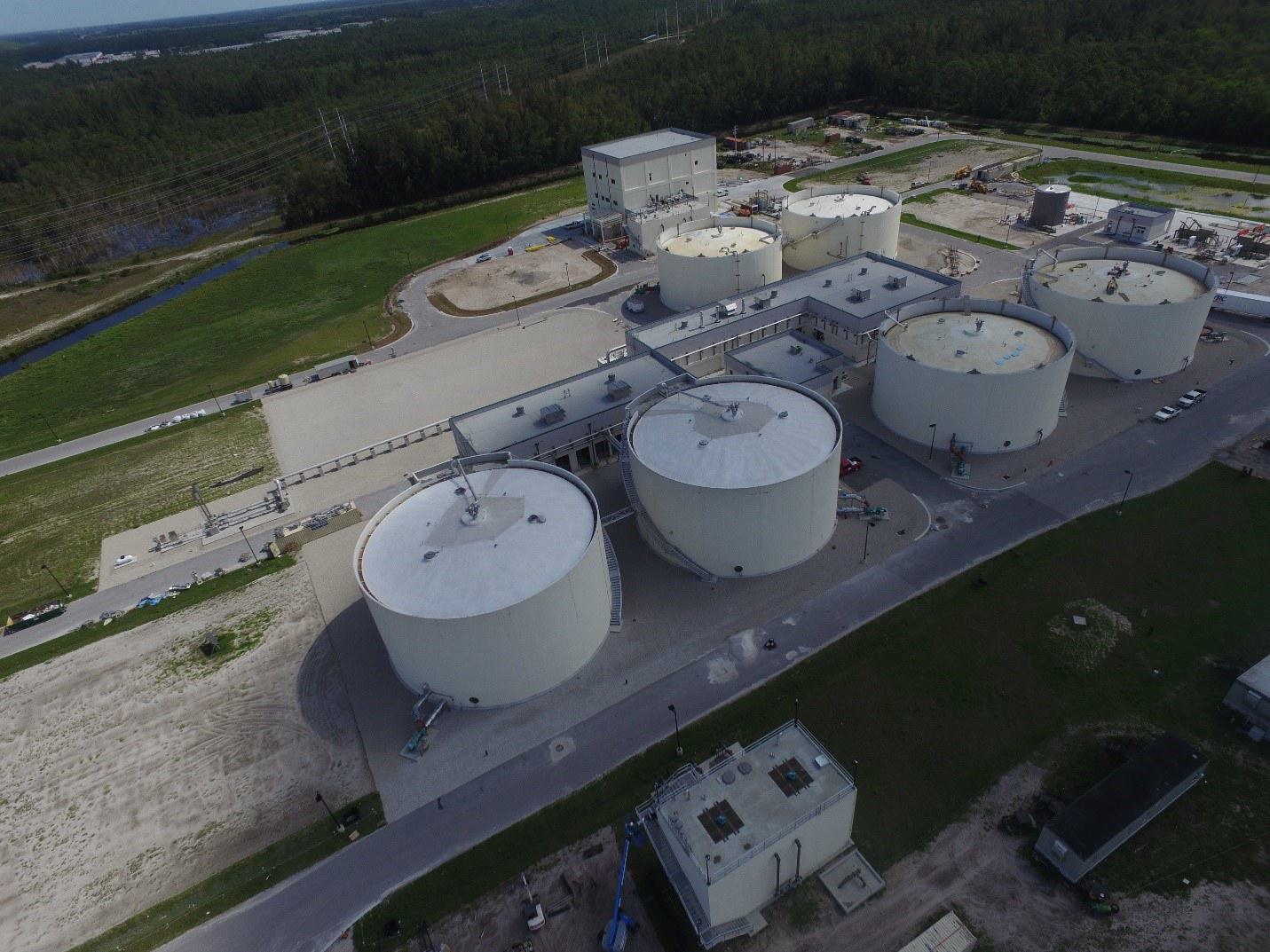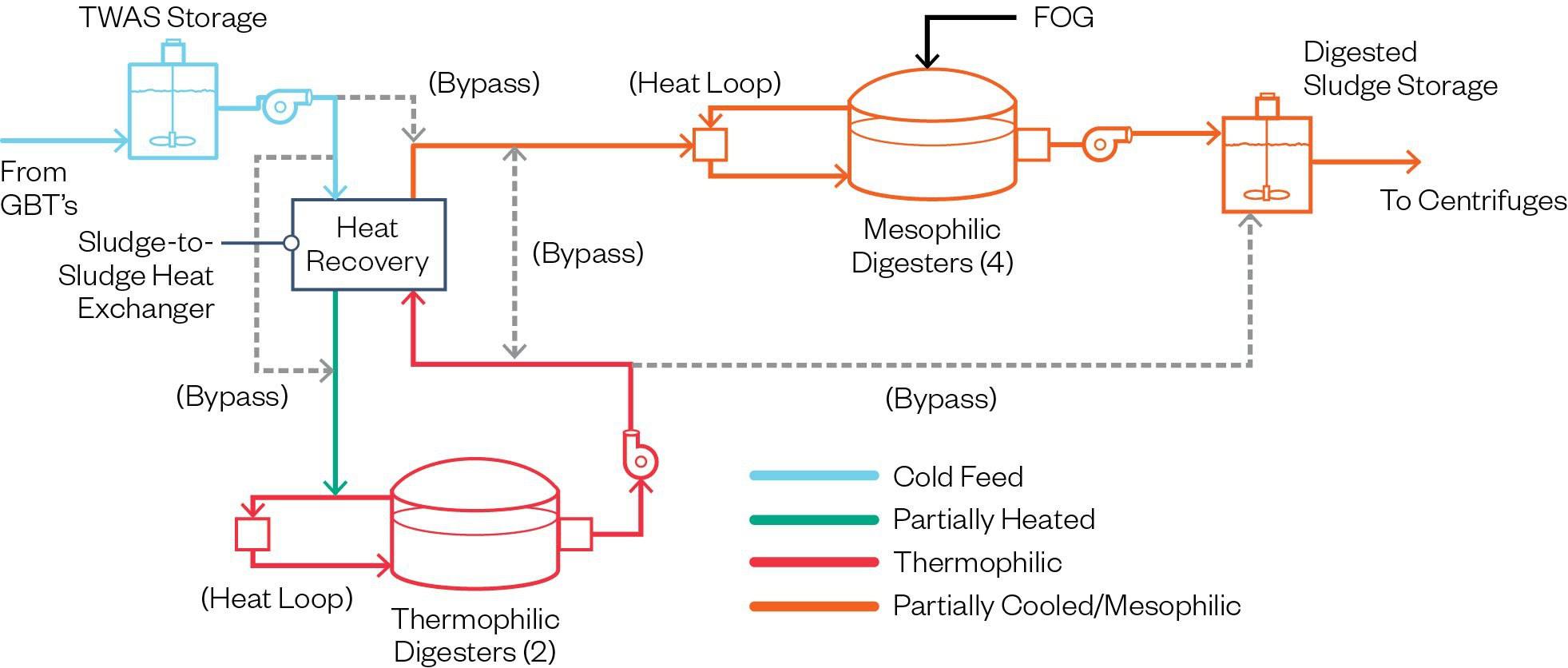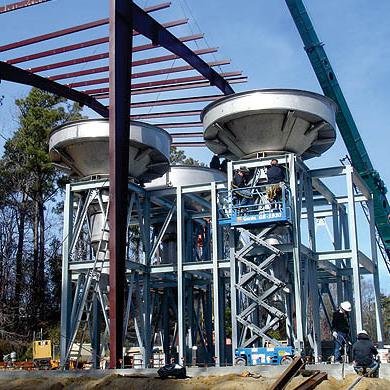Advanced Digestion at the East Central Regional Water Reclamation Facility
After an evaluation of 30 combinations of treatment alternatives, our design will reduce hauled biosolids mass by 35% and reduce in-plant power consumption by over 4,500,000 KWH per year at the East Central Regional Water Reclamation Facility (ECRWRF).
The 70-mgd ECRWRF serves five municipalities in Palm Beach County. The ECRWRF Operations Board was faced with aging infrastructure, limited aerobic digestion, increasing solids production, and closure of the regional biosolids composting facility. The Board commissioned Hazen to evaluate processes and technologies to improve solids destruction and dewatering performance; to maximize the potential for energy recovery; and to identify a reliable and cost-effective solution to ultimate biosolids treatment and beneficial use. The recommended solution includes waste activated sludge storage and thickening upgrades; new facilities for temperature-phased anaerobic digestion (TPAD) and high-solids centrifuge dewatering; and cake hauling to a regional pelletization facility. The Board then commissioned Hazen for preliminary and detailed design, permitting, bidding, construction, startup/testing and operational training for onsite biosolids improvements.
Preliminary Engineering Evaluations
Hazen evaluated 30 combinations of liquids treatment, solids treatment, biogas recovery and biosolids disposal options. Analyses for each option included whole-plant Biowin process modeling, solids production projections, preliminary unit process sizing, mass balance calculations, predicted performance, preliminary site layouts and comparative life-cycle costs. Hazen presented an executive summary of the evaluation and recommended facilities to the ECRWRF Board and each Board member entity’s commission for discussion/approval.

Over his career, Kurt Pfeffer has served as Project Manager on numerous Florida wastewater and biosolids projects.
Related Topics:
Process Improvements, Cost Savings
Hazen evaluated 30 combinations of liquids treatment, solids treatment, biogas recovery and biosolids disposal options.

Detailed Design
Biosolids improvements are designed to process up to 215 wet tons per day. Existing decant tanks were rehabilitated and repurposed for aerated WAS storage (to decouple sludge wasting and biosolids processing) and centrate equalization (to attenuate nutrient recycles to the BNR liquid treatment process.
The TPAD design employs sludge-to-sludge heat exchangers to preheat feed sludge to the thermophilic digesters and partially cool thermophilic sludge prior to mesophilic digestion. Mesophilic heat exchangers will use plant service water to complete cooling of sludge to mesophilic temperatures in temperature-phased mode. The facilities are also designed with flexibility to operate all digesters in conventional mesophilic mode. The sludge heat recovery system reduced the sizes of hot water boilers and sludge-to-water heat exchangers at each digester; and will make more excess digester gas available for future beneficial use.
The centrifuge dewatering facility includes four separate “vertical trains” consisting of a centrifuge (third floor), sludge storage hopper (second floor) and truck loading bay (first floor). The sludge storage hoppers will facilitate coordination between onsite dewatering and offsite pelletization processes.
FOG receiving facilities include unloading stations; a heated and mixed receiving/storage tank; and transfer pumps to inject FOG into a recirculated sludge loop from each mesophilic digester.
Construction, Startup and Commissioning
Hazen and Sawyer has provided full construction, startup and commissioning services for the $95 million improvements project. Onsite staff has included a Construction Engineering Manager; up to 5 Resident Project Representatives at the peak of construction activities; and process/design engineers for specialty inspection and startup/training. Hazen administered a web-based document management system used by the Contractor, Engineer, Owner and Owner’s Representative to improve workflow and allow for real-time project tracking by all stakeholders.

Project Outcomes and Benefits
- The combination of TPAD and high-solids centrifuge dewatering will reduce hauled biosolids mass by 35%.
- This reduction in hauled biosolids mass will allow ECRWRF to remain below the maximum capacity allocation in their new contract with the regional pelletization facility.
- Co-digestion of FOG will reduce impacts of FOG to liquid stream treatment and increase available biogas energy for beneficial use to fuel the regional pelletizers.
- Improvements will reduce in-plant power consumption by over 4,500,000 KWH per year.





















